This is part of a three part series on the aesthetics of ugliness. You can read the first part, on ugly art, here.
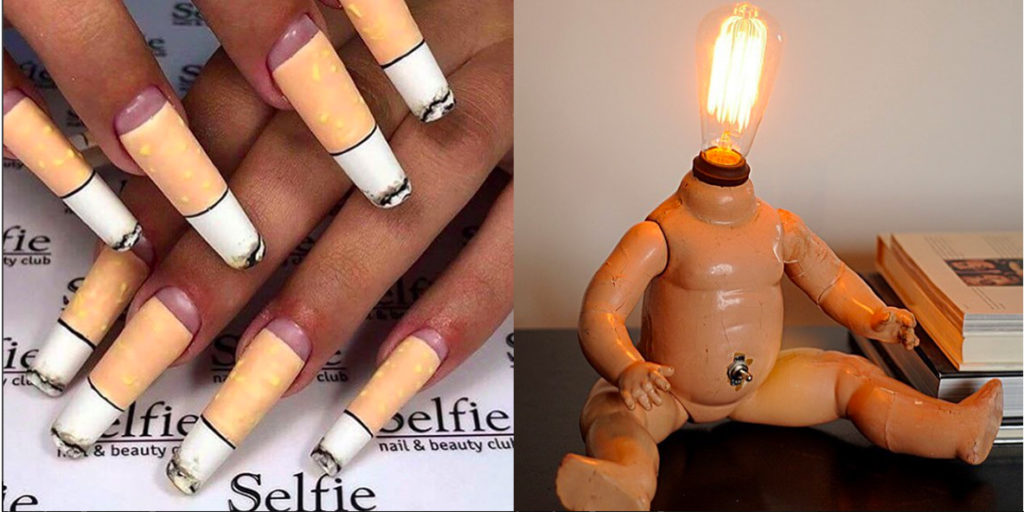
Items via Ugly Design
I covet a piece of technology that never existed and likely never will. I can’t stop thinking about it. I covet the seashell e-reader from the 2014 film, It Follows. The movie is one of my all-time favorites, because it so fluidly combines three of my main interests: awkward sex, sudden death, and timeless design. Typically, when someone calls a piece of furnishing or a car or a handbag “timeless,” they mean it will look just as classic and classy in a few decades as it does today. This is not what I mean about It Follows. Here, the overall look is timeless in that it is outside time. The cars are ugly and retro, low-riding boxy boats that patrol the middle class suburbs, emitting low, guttural growls. The houses are ugly, too, with brick lower levels topped by vinyl sided second stories with a smattering of carelessly placed rectangular windows. This is intentional, according to director David Robert Mitchell. In an interview with Paste magazine, he says it was “very much part of the plan,” to “make the film exist outside of time in a way that it resembles a dream or a nightmare.” This includes introducing “anachronistic production design elements,” including things from various eras and “things that don’t quite exist” but could, somewhere, in some timeline or alternate universe.
The film is filled with uncanny objects, but it’s the e-reader that nags at me. In a movie dominated by strange color combinations—aqua and orange, pale pink and blood red—this shell-shaped device is appealingly contemporary. It looks like an art object snatched from a shelf at The Wing or a prop from a Glossier campaign. It’s the perfect combination of ugly (plastic, slightly tacky) and cute (it’s pretty much a grown up Polly Pocket). It isn’t a real product, yet somehow it is still the most perfect example of contemporary ugly design that I can pinpoint.
If you scroll through the Instagram account, Ugly Design, you’ll notice a pattern. There is an umbrella that looks like a head of romaine lettuce, a flip phone that looks like a miniature racecar, a pair of flip-flops that look like silver fish, and a lounge chair that looks like a loaf of bread. “We are always looking for things that are inspired by other things—objects that look like animals or body parts, or things that were designed to look like other things,” Jonas Nyffenegger, who runs the account along with his colleague and friend, Sebastien Mathys, told me. When they first started posting three years ago, they tended to highlight objects that had bad proportions. They posted pictures of chairs that looked intolerable to sit in, lamps that were so lopsided they seemed about to topple over, home goods that were destined to wind up curbside, waiting for a garbage collector or a college student to walk by. At first, Nyffenegger and Mathys were showcasing objects they loathed, but as the project evolved, they began to realize two things. Not only did they actually like a lot of the pieces they were finding—“we went from haters to lovers,” Nyffenegger said—but so did a lot of fashionable people. Nyffenegger said, “More and more people are submitting to us, especially people who work in fashion.”
As they began to fall in love with ugly design, Nyffenegger and Mathys started to refine their project. It wasn’t enough for the object to be poorly made or unappealing; the object had to inspire questions. It had to feel absurd and a little unreal. “Every day, we see something and think—oh my god, this exists? Why? Who did it?” Nyffenegger says. “It makes you wonder where it came from, and who would think to connect these two different shapes to create this one thing.” Nyffenegger has a pair of fish slippers from Thailand that are a perfect example of the type of “ugly” design they’re looking to feature. He can’t really say why someone decided to make fish slippers, or who came up with the idea, and wondering is half the fun. Like ugly paintings, which inspire empathetic questions about the mind of the maker, the joy of these pieces comes from their opaque nature. Their aesthetics do not relate in any clear way to their function (slippers aren’t more comfortable because they look like fish, and an e-reader isn’t any more legible because it is shaped like a scallop’s shell), leaving consumers to marvel, “Who came up with this, and why?”
The popularity of Ugly Design, the rise of “maximalism,” and the continuing creep of High Kitsch (an aesthetic that is moving, slowly but surely, from the digital realm into the lived one through locations like the Museum of Ice Cream and the Color Factory), indicates that we’re on the cusp of a new aesthetic moment, one that breaks with the oppressively omnipresent Scandi-chic, Kondo-approved, gray-everything minimalism. We’re seeing a return to the gaudy and tacky design of the 1980s, an era of excess and wealth that has been embodied and elevated to a dangerous level with the presidency of Donald J. Trump. Yet while there’s a new appreciation for highly decorative furniture (like this Laura Ashley-esque couch being sold at Ikea), it doesn’t seem to come from the same place as the wealth-worshipping rococo excess of the 1980s. People have begun to spin maximalism as a political point of view, one that celebrates thriftiness and eschews the homogeneity of high quality sparsity. Writing in Dame magazine, Kate Washington makes the argument that minimalism is a “hard-to-achieve status symbol” that oppresses women, who bear the burden of decluttering and recluttering, purchasing and purging. “The classism and privilege baked into minimalism are multilayered,” Washington writes. “Big Decluttering, by positing the streamlined home as a purely personal matter of choice and shifting women’s attention to the domestic sphere, can distract from larger systems of oppression—including the direct oppression of less-privileged women and, often, children, who are severely underpaid for the labor of making all the cheap stuff that more privileged women are taught to toss out of our homes.”
Of course, ugly design is also part of capitalism and consumerist culture. As Derrida says, il n’y a pas de hors-texte. For decades, we’ve been told to buy beautiful, useful things, items that have clean lines and clear purpose, like bespoke wooden brushes and “classic” white furniture. But once you have all the birch wood chairs and Apple products you need, what could possibly compel you to buy more? Trends exist because people get bored, but they also exist because capitalism demands that we continue to want. Now that maximalism is in, I suddenly feel compelled to purchase a fussy and ornate couch to replace my gray midcentury modern-inspired Ikea workhorse. I want painted chairs with turned wood legs to replace my Shaker style pine. Instead of buying pretty pink cans of hipster-approved grapefruit-scented La Croix, I am tempted to order a case of the new bubble-lettered beverage Ugly seltzer and “glug ugly,” as their marketing copy suggests. (As I’ve written before, I’m very easily swayed by trends)
But this is what I love about truly ugly design. I can appreciate it without wanting to possess it. (Except for the shell e-reader. I want that.) Scrolling through the Ugly Design Instagram, I don’t feel a terrible urge to clutter my house with these items. Instead, I feel a terrific joy at their stupid irrationality.
This is perhaps the key to ugly as an aesthetic category: it is nonsensical and lacks coherence. Good design, in contrast, follows the maxim set forth by architect Louis Sullivan, “form follows function.” Since the dawn of the 20th century, our understanding of good design has had a slightly moralizing tone, even as it shifted from early Bauhaus to boxy midcentury modern and into the sleek, mass produced, Apple-inspired white cubes of 21st century minimalism. William Morris once famously wrote that he would have nothing in his house he “did not know to be useful or believe to be beautiful.” This became the ideal expression of gorgeous taste, the purchase of items that are either useful or beautiful but ideally both.
Ugly design is the exact opposite. These items might be useful, but their utility is secondary. They’re certainly not beautiful. People buy them because they’re funny or interesting, because they inspire a spark of weird happiness (or they buy them out of irony, a motive that I find relatable, if boring). Nostalgia and kitsch merge with irrationality. These objects look like things from childhood, yet they also don’t make sense, which creates a sense of discomfort. In trying to figure out the appeal of these weird products, I’m left calling on a series of paradoxes: they’re familiar yet strange, ugly yet appealing, contemporary yet nostalgic, tasteless yet cool.
Perhaps this is one of the reasons that ugly design is so trendy. Ugliness isn’t just a rebellion against the norms of good taste, it’s also a fittingly chaotic aesthetic for a chaotic era of presidential tweets, alternative facts and government propaganda. Culturally, we’re experiencing a sense of slippage. Reality isn’t as stable as it once was, and even serious outlets like the New Yorker have been playing with the idea that we’ve somehow fallen into an alternate timeline. In the “real” timeline, “La La Land” won best picture, Hilary Clinton is president, and there exists a children’s book called The Berenstein Bears. In the nightmare timeline, we have “Moonlight” (yay!) and Trump (boo!) and Berenstain Bears (eh).
This theory reminds me of another indie movie, the 90s cult classic Clerks, in which the beleaguered protagonist greets each new misfortune at his sad day job with a refrain so whiny it feels almost singsong. “I’m not even supposed to be here today,” he cries, over and over. Much of America seems to feel this way. We’re not even supposed to be here, making terrible wages for so much work, paying out the nose for health care, watching a bloviated reality television star plan excessive displays of military might while children sit in cages at our borders. Something has gone wrong with our timeline, and we’ve fallen out of order. And yet, here we are, with so little control over the world and so many grievances, so much fear, so many unanswered questions. We might as well slip out of our elegant beige Muji houseshoes and put on a pair of fish slippers instead.
Katy Kelleher is a writer who lives in the woods of rural New England. She is the author of Handcrafted Maine.
from The Paris Review https://ift.tt/2CEvgBh
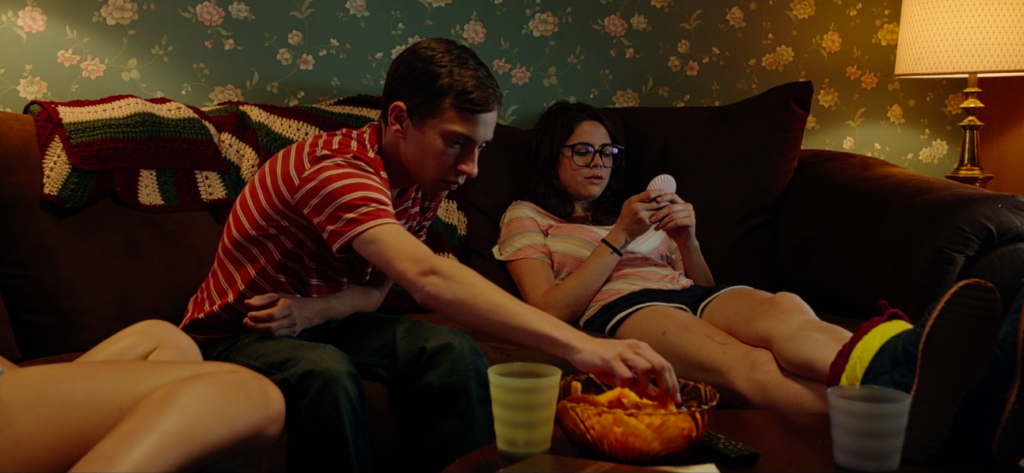
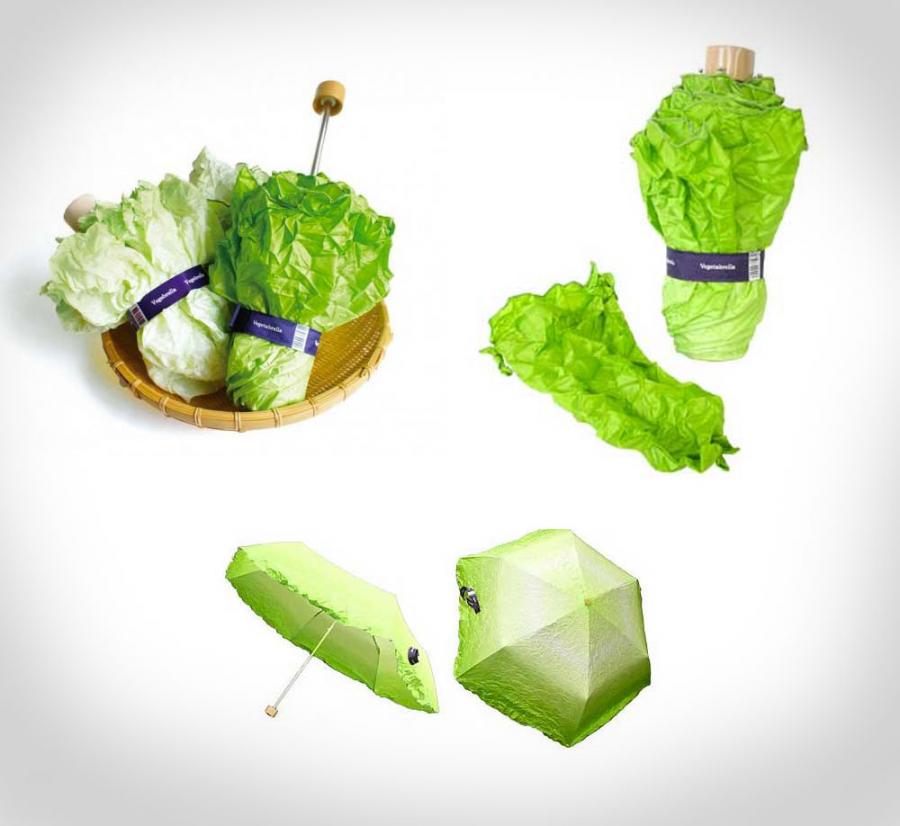
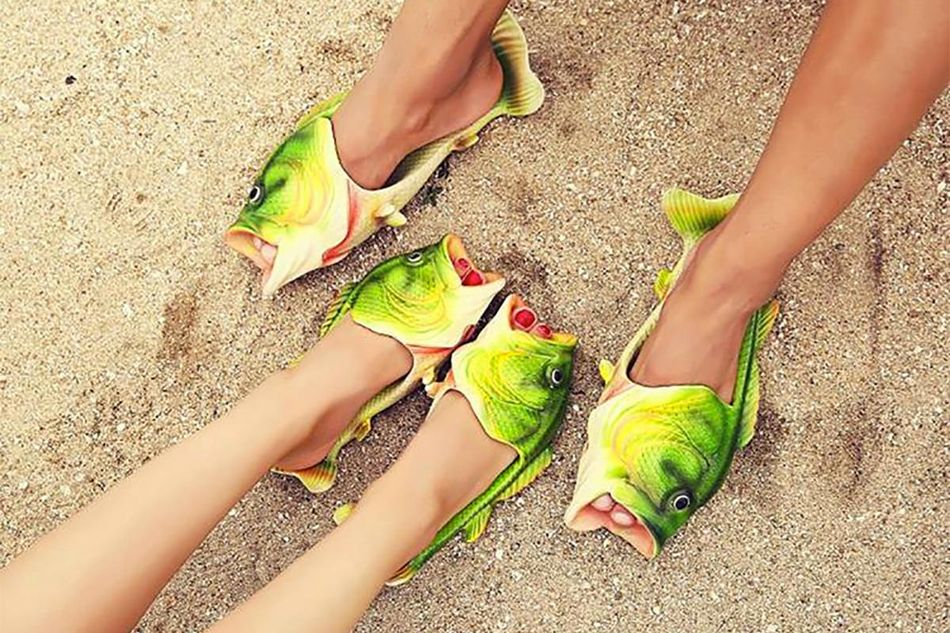
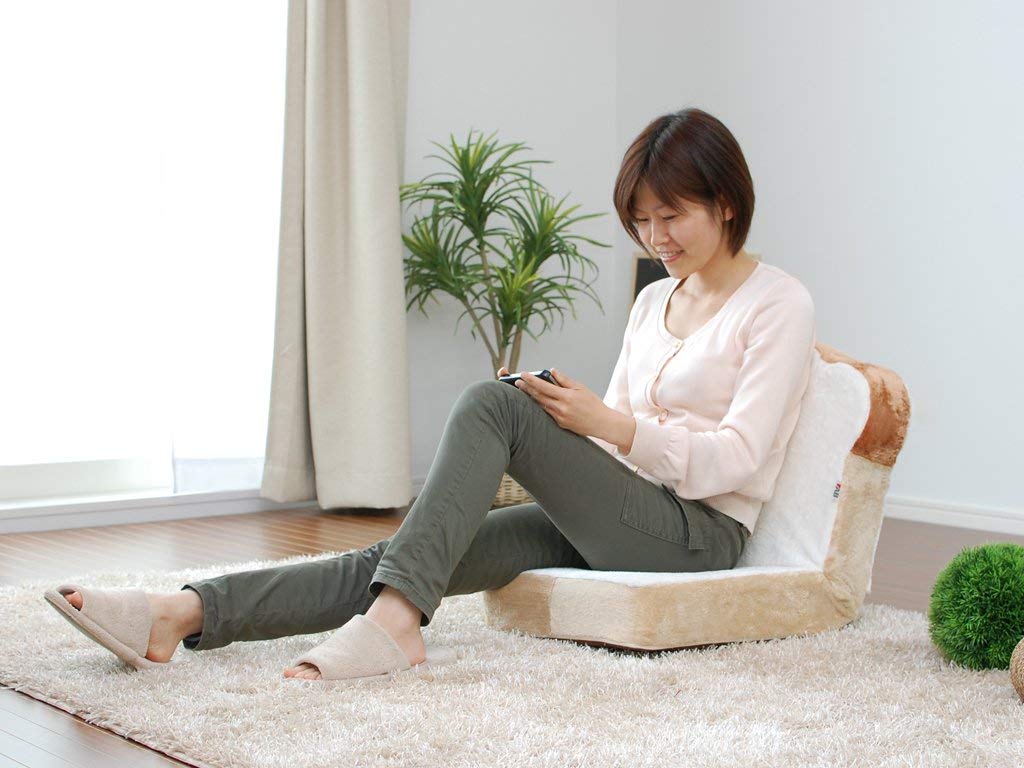
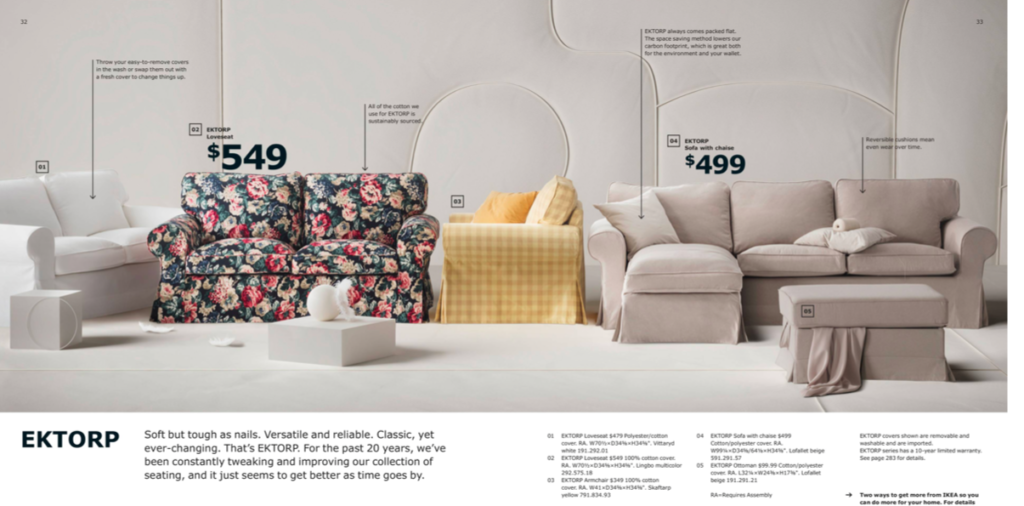
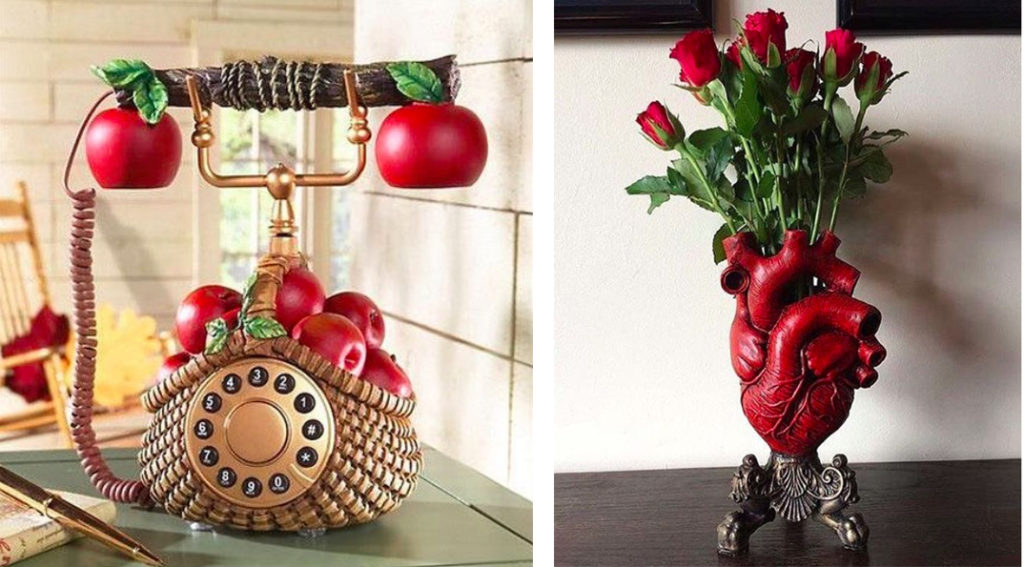
Comments
Post a Comment